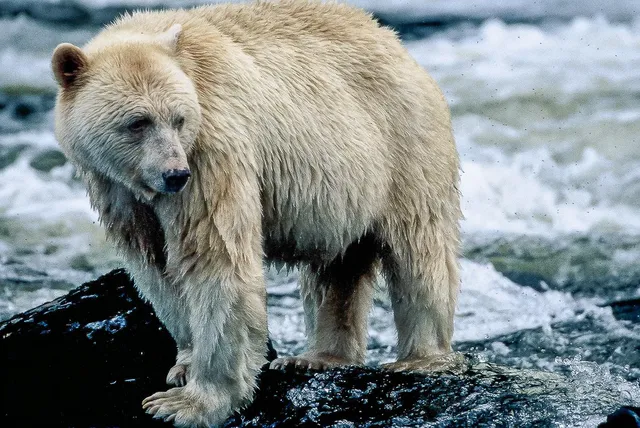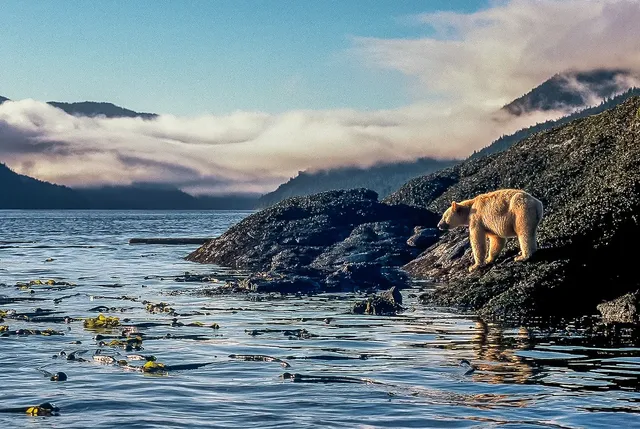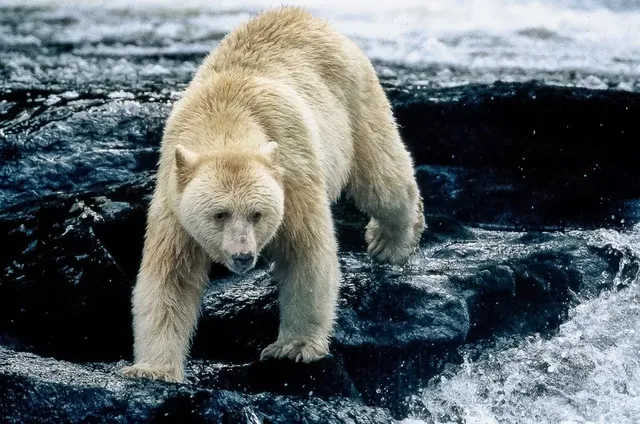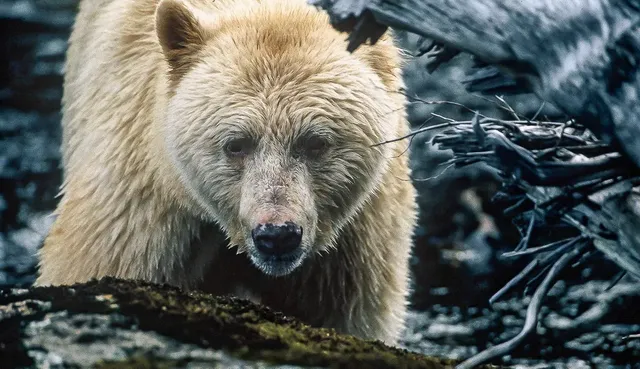A Visit to colourful Kermode Territory in Canada!

“They stand on their hind feet, they sit on their rear ends , they even snore when they sleep.They’re intelligent, they’re curious, they learn fast and adapt well, and they seem to experience the same sort of moods we do.”
WILDLIFE biologist Wayne McCrory said the above about one of the rarest bears in the world—the white black bear of Canada’s northwest coast. The scientific world was first introduced to this bear in 1900 by William Hornaday, a member of the New York Zoological Society. He was cataloging bearskins from Victoria, British Columbia, and came across an unusual pelt. It was creamy white with a light-golden tint and was similar in shape to the pelt of the black bear.
Intrigued by the finding, Hornaday invited Francis Kermode, the director of British Columbia’s Provincial Museum, to assist in collecting more information on what Hornaday thought was a new species of bear. In 1905, in recognition of Kermode’s efforts in obtaining specimens and information, Hornaday named the bear Ursus kermodei—Kermode’s bear.
Kermodes are members of the black bear family, yet they are not always the color that their name suggests. The native Indian Tsimshian-speaking people, who live in Kermode-bear country, call the bear Moksgm’ol, or white bear. There have also been sightings of orange, chestnut-red, gold, bright-yellow, blue-gray, and even patchy black-brown-white bears.

Biologists are still not sure why there are white Kermodes. One suggestion is that a random genetic mutation may be responsible for the distinct color. Actually, only 1 in every 10 Kermodes sighted is white. Kermodes of Canada’s Pacific northwest coast are certainly unique and deserve more than a casual look.
Visiting Kermode Territory
Kermodes can be seen in an area of approximately 29,000 square miles [75,000 sq km] along the north coast of British Columbia. If you travel northwest from Vancouver some 400 miles [600 km], you come to Princess Royal Island and the Douglas Channel area near Kitimat. Some 100 miles [150 km] inland, to the northeast, is the logging community of Terrace, located along the Skeena River. This region is the heart of Kermode country. It has been described as the wildest and richest wilderness of Canada’s West.
An experienced wilderness guide who knows the behavior of the Kermode is needed if you are to get even a glimpse of this white wanderer. The best time to sight one is in October, when the streams of British Columbia are alive with thousands of spawning salmon. During this annual event, Kermodes come down from the highlands to feast on a banquet of salmon. Describing the banqueting bears’ eating ritual, one eyewitness said: “Selecting the specimen they want, they put one paw on the head, then strip the skin off from the gills back, exposing the flesh on which they feast.”

What They Are Like
Kermodes may appear to be friendly, cuddly, and playful, but in actuality, like all bears, they can be unpredictable and dangerous. Reportedly, they have poor vision. Their small tapered nose and long nostrils are designed to maximize their sense of smell. Although they seem to move awkwardly, they are very fast. Some have been clocked at speeds of over 30 miles [50 km] an hour for short distances!
Full-grown females are from four to six feet [130-190 cm] in length and weigh between 100 and 400 pounds [50-180 kg]. Males are larger and occasionally exceed 500 pounds [200 kg]. When Kermodes stand on their hind legs, they tower at eight to nine feet [250 to 275 cm]. They are also good swimmers. A fisheries patrol officer, in fact, observed one swimming from a nearby island to the mainland. As he maneuvered his boat near the bear, it surprised him by diving and swimming underwater, surfacing only for air.

Encounters With Humans
When bears come to associate unnatural food sources with people, they frequently lose their wariness of man and can become overly aggressive and dangerous. Such bears are often destroyed. So the next time you see a bear in the wild and it is begging for food, remember that if you feed it, you may be not only inviting danger to yourself but also contributing to its early death.
Reflecting on this intriguing bear, we cannot help but be impressed with the variety that exists in the bear family. How wonderful and delightful are God’s creative works! And what a responsibility man has to care for such fascinating creatures!
Thanks for reading my post and hope you would kindly comment, upvote and follow me for more.
